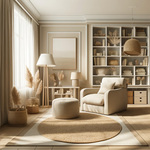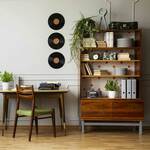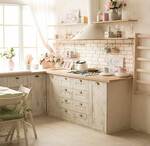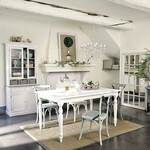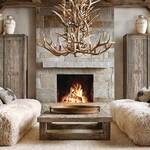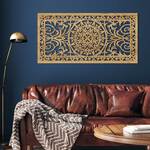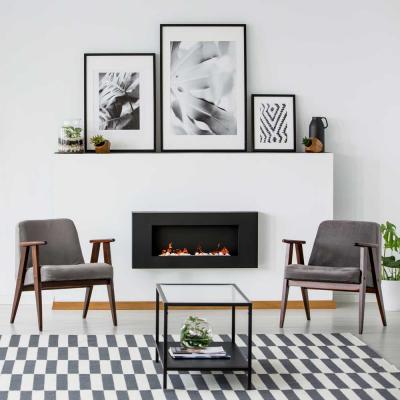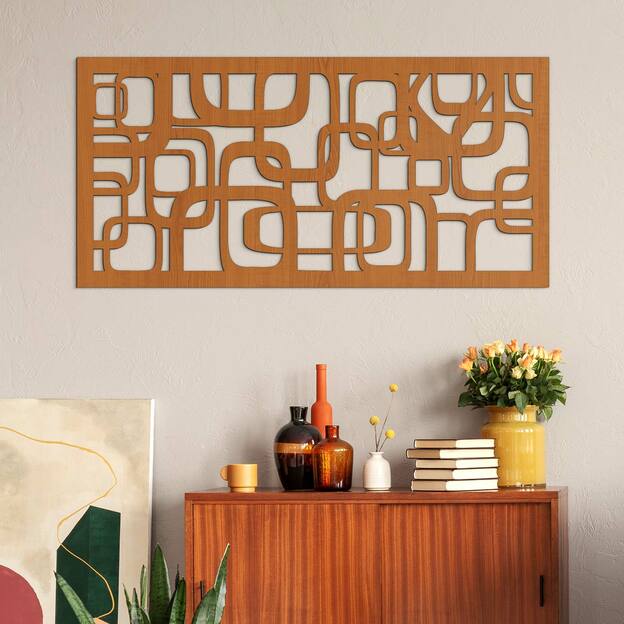
Retro Style Living – A Colorful Touch of the Past
Do you want to furnish your house or apartment in a retro style but don’t know where to start? We’ll guide you on the essential furniture your interior needs, how to combine colors and accessories effectively, and suggest a few decorations that will transport you back in time.
At the end of the 20th century, people often discarded old furniture, but today it has found its way back into our homes as a desirable feature. If you're looking to add a retro piece to your home but aren't keen on worn antiques, you can find retro-style sofas, lamps, and even electronics available in furniture and appliance stores.
What you'll learn in this article:
- Characteristics of the Retro Style
- The History of Retro Style
- The Difference Between Vintage and Retro
- Retro Style in Interior Design
- Retro Decorations and Wall Art
- Furnishing Rooms in Retro Style
1. Characteristics of the Retro Style
Not long ago, some households were discarding socialist-era furnishings from apartment blocks and renovating their homes with a more modern touch. However, even that wasn’t a guarantee of timeless design. While some trends are fleeting, others resurface repeatedly. This has brought back a selection of sofas with wooden legs, retro-patterned tiles in bathroom showrooms, and “old-school” kitchen appliances such as refrigerators, toasters, and coffee makers offered by electronics brands. With a touch of style and playfulness, just a few retro elements can create highly unique interiors infused with the charm of retro style.
The term retro refers to something past or bygone, and to truly call a piece of furniture retro, it should be at least 15 to 20 years old. Retro often represents the historical period between the 1950s and 1980s. In former Czechoslovakia, it was also known as the Brussels style, named after the country’s extraordinary success at EXPO 58 in Brussels.
Traditional retro materials included not only classic natural wood but also brass, cast iron, and synthetic materials of the time, such as Formica, vinyl, and chrome. Vibrant and bold colors, daring patterns, and motifs were central, appearing not only on furniture but also on cushions and wallpapers.
Main Features of Retro Style:
- Bold, pastel colors – To learn more about color combinations, click here.
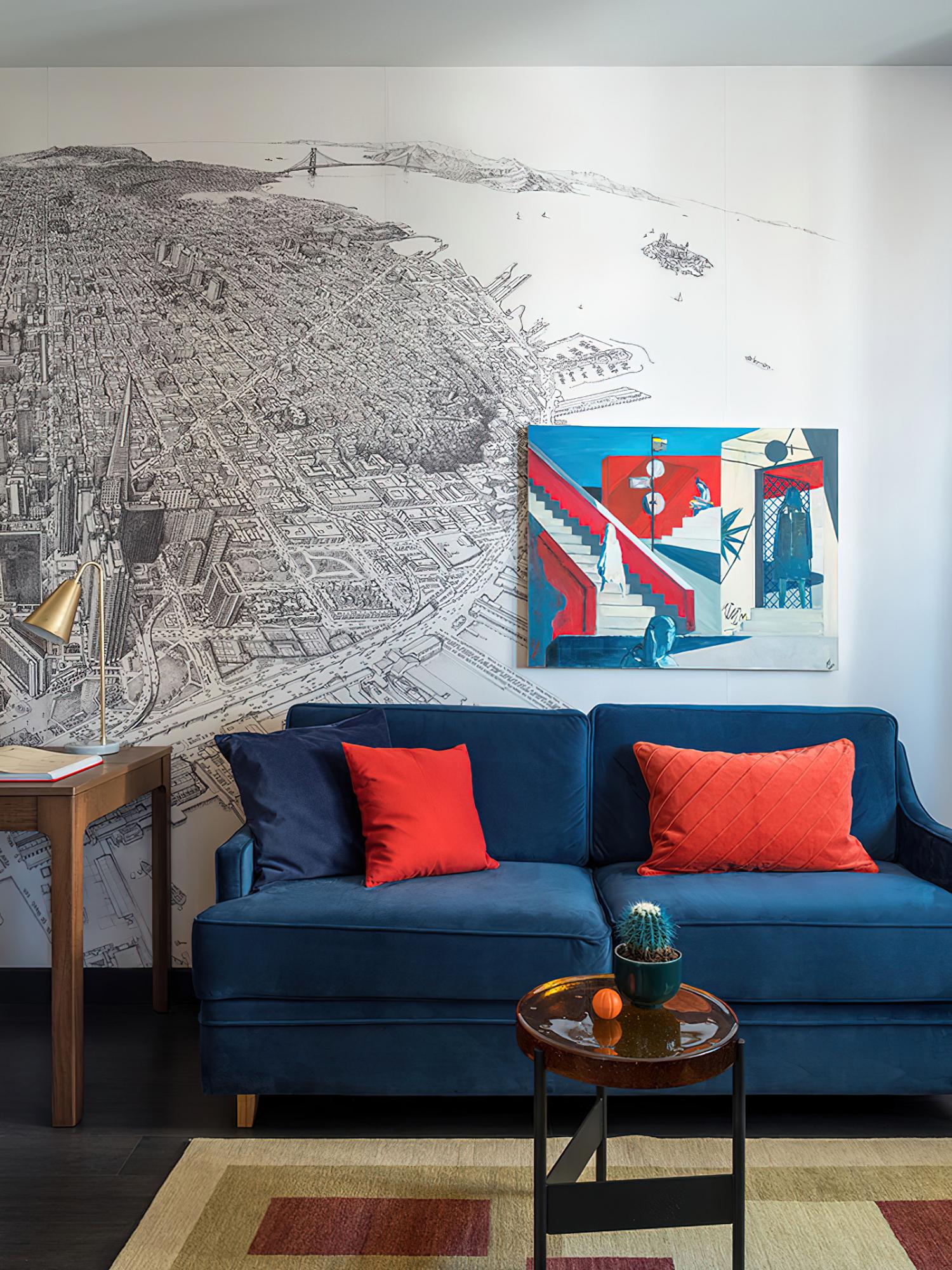
Source: pufikhomes.com
- Distinctive geometric and floral patterns – In art, retro style often draws from Cubism, with Pablo Picasso being a prominent figure.

Tip for retro-style décor - Wooden Abstract Wall Art - Geometric 2
- Rounded and elegant shapes – Think rounded tables, furniture corners, and rugs.
- Furniture with wooden legs – From sofas and armchairs to sideboards, wooden legs are a defining feature of retro furniture.
- Open shelving systems – Common in wall units, sideboards, or bookshelves, often featuring open shelves without doors.
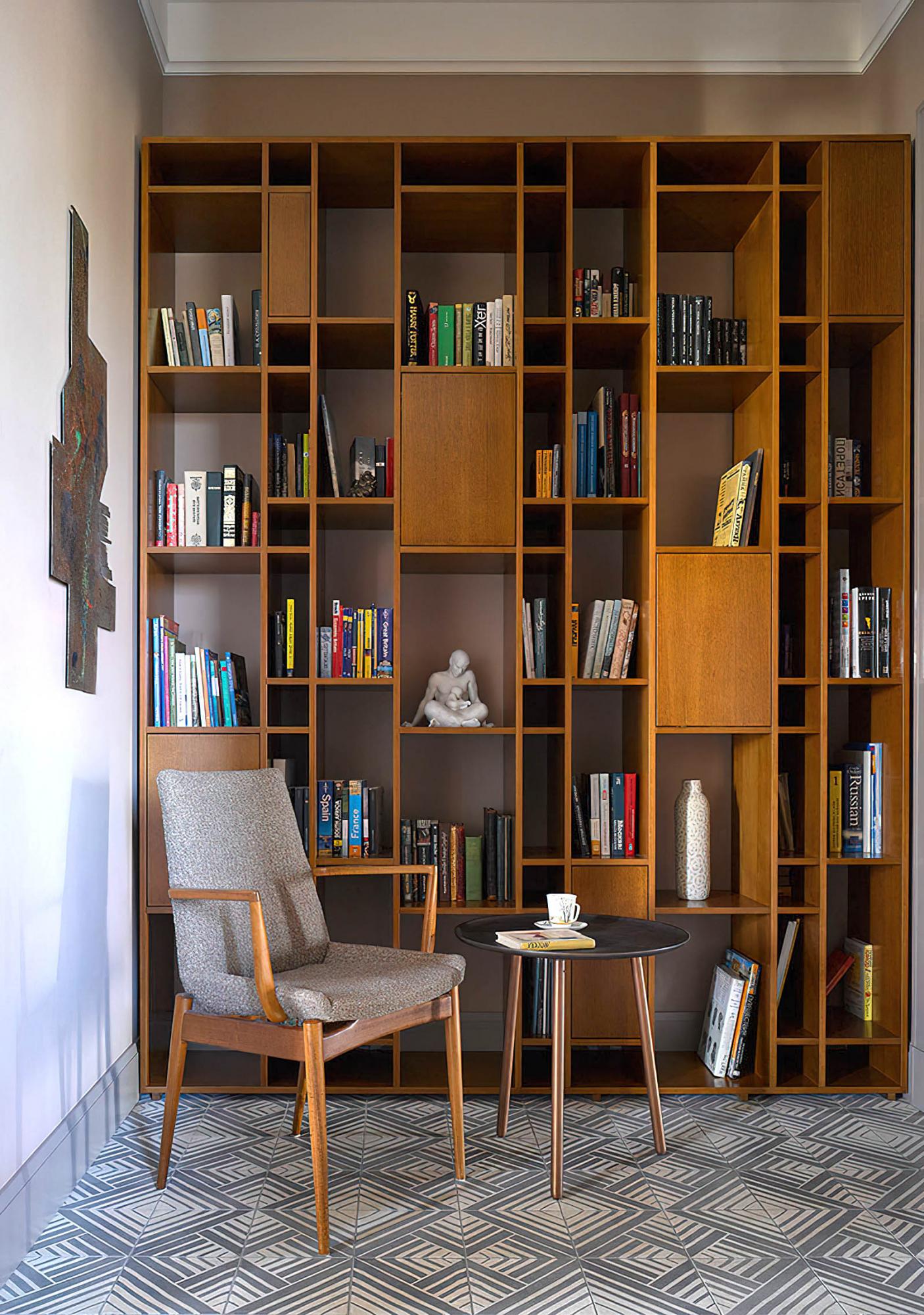
Source: pufikhomes.com
- Low tables and armchairs – Typically constructed with wooden frames and upholstered with bold fabrics.
- Glossy lacquered wood – Retro furniture often features wood with a semi-gloss or high-gloss lacquer finish.
- Traditional materials include wood, plastic, laminate, Formica, plywood, and faux leather.
- Light oak, walnut, and cherry wood – Ideal choices for creating a retro-style interior.
- Minimal detailing – Retro style emphasizes practicality, so furniture is often simple and functional.
- Clean lines – Shapes and patterns in retro style are chosen for their simplicity, making it easy to combine with other styles like minimalism.
2. The History of Retro Style
Retro style drew inspiration from the period following World War I. Cultural and social shifts brought about new artistic, musical, and architectural movements. After a difficult time, people longed for change and a freer way of life. This was reflected in design and interiors, as design shed its seriousness and adopted an element of playfulness.
Playfulness and freedom were evident in furniture shapes, patterns, and ornaments. Common motifs included geometric, abstract, and simplified floral designs. Materials like solid wood, veneered wood, synthetic materials, glass, leather, faux leather, and chrome details were widely used. Instead of traditional paintings, posters became popular decorations. Many designs from this era remain timeless, characterized by simple, clean lines and minimal details.
3. The Difference Between Vintage and Retro Style
Do you find yourself drawn to the rounded shapes, creative colors, and playfulness of retro style that transports interiors back in time by several decades? A retro-style kitchen welcomes you with a rounded fridge in a trendy color, complemented by a retro kettle or kitchen robot. Despite its cohesive aesthetic, the interior still features entirely new products equipped with the latest technologies. These are newly crafted, stylish pieces. Retro therefore has the freshness of novelty, whether it’s furniture or appliances.
The fate of today’s minimalist interiors is clear—within a decade, they will undoubtedly go out of fashion. This cannot be said about retro style. By choosing it, you are already creating a timeless interior with a perfect concept and unified vision. A space that reflects your personality today and will continue to do so in twenty years.
How does retro differ from vintage? The difference is simple: consider an example of a classic 1960s chair with rounded edges. If you search for this chair in a retro style, it will be a newly manufactured item made from fresh wood by a craftsman. It will smell of fresh wood and feature a modern, eco-friendly lacquer. By contrast, a vintage 1960s chair would have been made decades ago, and its smell and condition will reflect the age of the wood and materials used.
4. Retro Style in Interiors
If you’re planning to renovate your home in a retro style, start with parquet flooring, a timeless choice still appreciated by architects today. Parquets can also be lacquered. Regarding wall colors, the winning shades are mustard yellow, light green, red, pale blue, and brown. These should form the foundation of your color palette. A great tip is to use geometric-patterned wallpaper, which pairs beautifully with white walls.
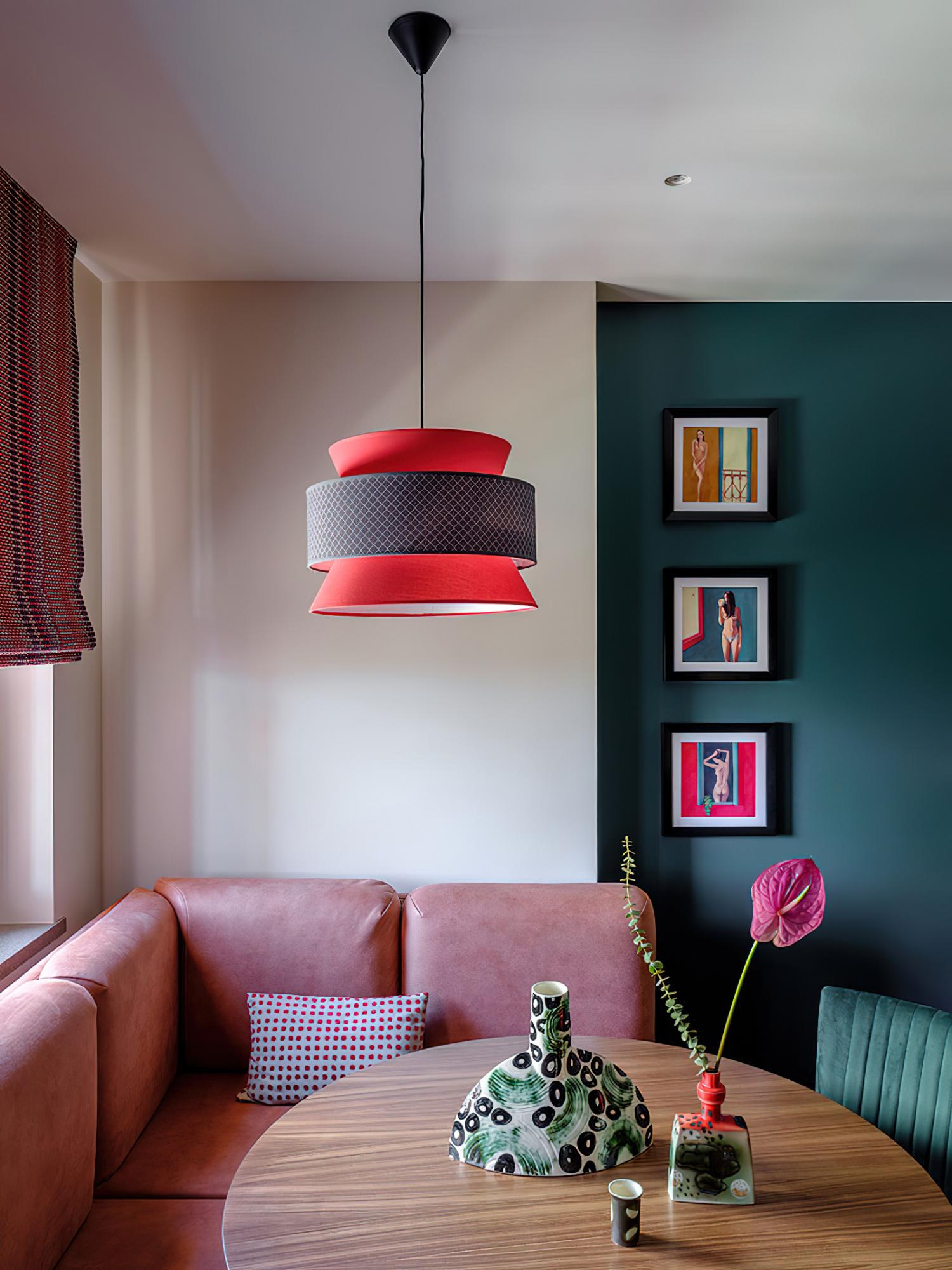
Source: pufikhomes.com
The rule of thumb in this style is that new combinations blend perfectly with older elements. You don’t need to haul a sofa from your grandmother’s attic. Modern, high-quality pieces are widely available. However, you should avoid a palette of colors like gray, black, white, or beige. Be bold and opt for mustard yellow or petrol blue. Enhance the space with bold decorative cushions or a striking chair with wooden legs. Essential retro elements include a statement sideboard, an oval coffee table, and well-chosen decorations like an old typewriter, a classic telephone, or retro clocks. A modern living room with retro accents is ready to shine.
The white kitchen is a thing of the past, giving way to vibrant and bold colors, especially in retro style. The most iconic choice is a red retro kitchen. Did you know red stimulates appetite? This is evident in the logos of famous fast-food chains and beverage brands. Kitchen cabinets inspired by past decades now boast advanced functionality and features. High-quality materials, ample storage space, and self-closing drawers are just a few modern innovations that were unimaginable a few decades ago.
If red or blue feels too daring, consider classic wood tones or neutral hues like hunter green, pastel blue, or gray. Every retro-inspired kitchen should feature freestanding appliances. Even a colorful trash bin can serve as a stylish accessory.
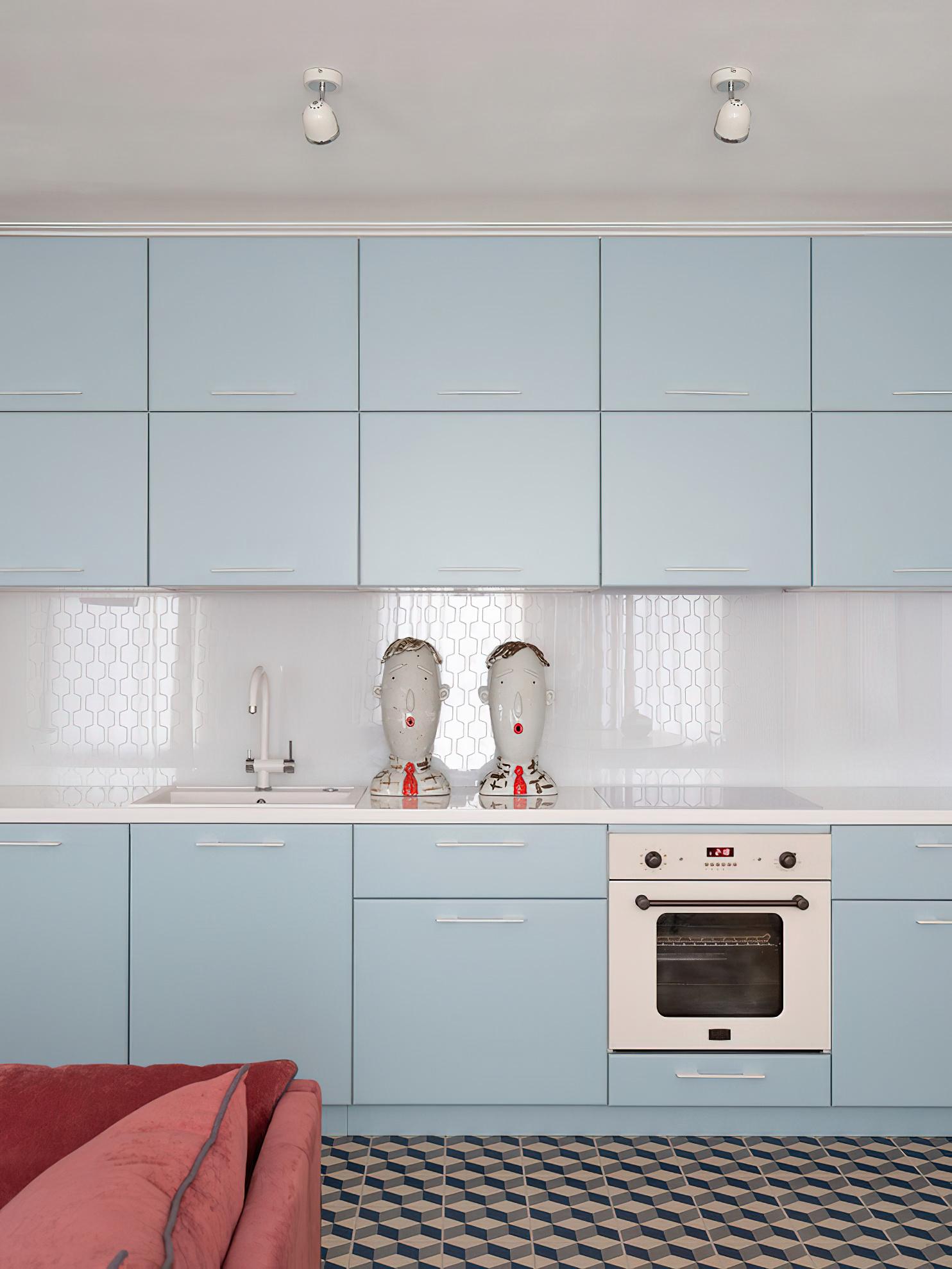
Source: pufikhomes.com
Retro interiors are characterized by bold, vibrant, and pastel colors that can be combined with each other or with neutral tones. Here are some proven color combinations for retro-style homes:
- Light gray + dark gray + mustard yellow
- Olive green + orange + blue
- Red + dark red
- Pale blue + lavender + yellow + pink
- Yellow + red + green + black-gray
If you need to visualize these color combinations, check out this link.
Retro interiors pair beautifully with solid wooden panels and parquet flooring. You can also opt for wooden floor coverings that appear aged. If you come across a genuine Persian rug or another quality piece, don’t hesitate to place it under a coffee table to make it stand out.
Wallpapers are essential for retro interiors. While traditional paper wallpapers have been replaced by modern vinyl ones, you can now choose from a wide range of retro patterns and motifs. Wallpapers with floral patterns look great behind a sofa, while mosaic-themed wallpapers are ideal for kitchen backsplashes.
Retro style is complemented by decorations like throws, tablecloths, cushions, and rugs. Curtains and beautiful drapes are also striking features. Pay attention to the selection and combination of even these seemingly minor details. Choose colors, patterns, and motifs that harmonize without clashing.
5. Retro Decorations
For visual inspiration, turn to old magazines, movies, or photographs from the era. Enhance old furniture with retro-style decorations such as black-and-white photos, tin signs with humorous slogans, or wall clocks reminiscent of those found at your grandmother’s cottage. Decorations don’t have to come solely from department stores—check out flea markets, bazaars, or your grandparents’ attic for hidden treasures.
Here are some tips on what to look for when seeking the perfect pieces:
- Appliances with rounded shapes and chrome elements – Think retro-style toasters, rounded fridges, and coffee machines. A retro radio with a wooden body is a must-have, whether it’s a functional vintage piece or a modern replica.
- Furniture combining wood, Formica, and chrome, often with wooden legs – sofas, armchairs, tables, and sideboards all share this signature detail.
- Posters instead of classic paintings – Posters featuring icons like Marilyn Monroe or designs inspired by famous films.
- Metal signs with retro advertisements – Nostalgic American-style metal plaques featuring vintage marketing motifs, such as Coca-Cola ads.
- Cubist artwork – Bold geometric designs in vibrant colors fit perfectly into any retro interior.
- Record players – A "must-have" item, whether you choose a vintage gramophone or a modern version. Turntables and vinyl are iconic elements of this period.
- Large arching metal lamps – Ideal for living rooms, these lamps often came in brass, black, white, or gray. They provide excellent lighting for evening reading on the sofa.
- Rounded porcelain or plastic light switches – Choose rounded or curved switches for a seamless fit into any retro room.
- Small retro radios – Perfect for display on a freestanding sideboard or shelf, especially in the living room.
Retro style is vibrant and bold, requiring careful balance. Its elements often feature contrasts, combining bold colors with a mix of smooth and textured surfaces. Retro elements pair well with other styles such as minimalism, Scandinavian, and industrial.
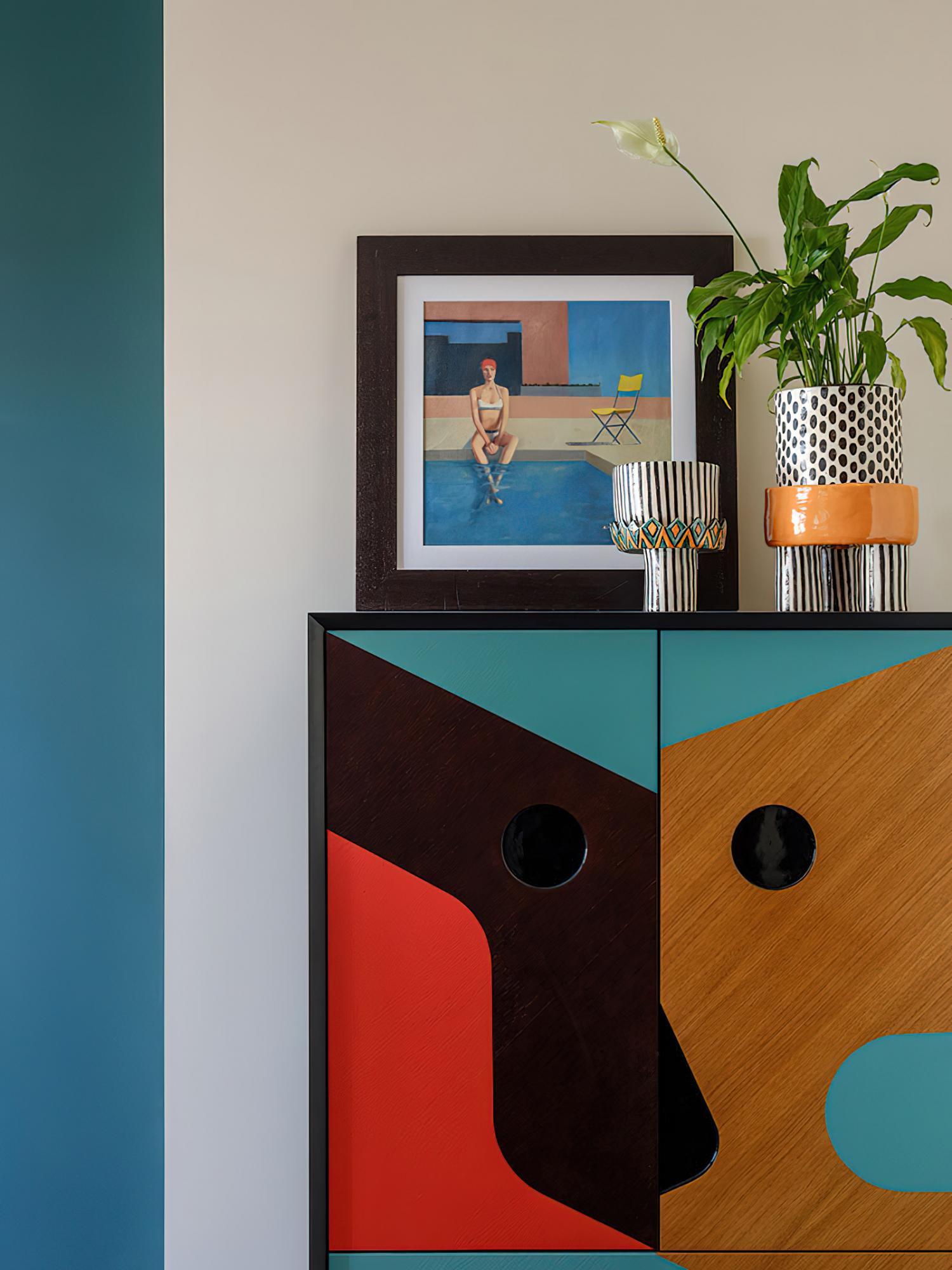
Source: pufikhomes.com
Decorating in retro style can rejuvenate an interior. You can either select a few iconic pieces or completely redesign your home in retro fashion. The choice is yours on how far you want to take your household “back in time.”
Retro style is not for those who prefer subtle classics. It’s a style for bold individuals who are unafraid to experiment. While old furniture can serve for many more years with proper care, retro-designed appliances ensure functionality with a timeless look. The key is elegant simplicity, practicality, and above all, comfort.
5.1 Retro Wall Art
Modern wall art can truly define the style and character of an entire home. This type of visual art on canvas can push the boundaries of aesthetics while adding a cozy touch to the space. Wall art works well in the living room, bedroom, hallway, or even all of them. However, care should be taken to ensure the space "breathes" and is not overcrowded with decorations, preserving the impact of every detail. Choose from drawings, realistic photographs, abstract art, or floral motifs, which are highly timeless. Multi-panel wall art also enhances the retro home aesthetic, especially when crafted from traditional materials.
Wooden retro wall art from DUBLEZ:
6. Furnishing Individual Rooms in Retro Style
Looking for inspiration for specific rooms decorated in retro style? We’ve prepared a generous dose of ideas for you. Let’s explore how designers from various corners of the world have embraced retro style in their interiors.
6.1 Living Room in Retro Style
In the living room, don’t hold back on retro-style accessories. A blank wall can be complemented with abstract or cubist-inspired artwork framed in delicate wooden frames. An open sideboard displaying books and records beautifully completes the interior. Armchairs and sofas with pointed wooden legs are practically a must. Coffee tables often feature rounded shapes (sometimes irregular ones) and also stand on pointed legs.

Source: pufikhomes.com
Gallery of Retro-Style Living Rooms:
6.2 Bedroom in Retro Style
Bedrooms often feature large wooden beds. Pillows and bedspreads can incorporate simple geometric patterns combined with solid colors. You can liven up one of the walls with retro-style wallpaper featuring floral or geometric designs.
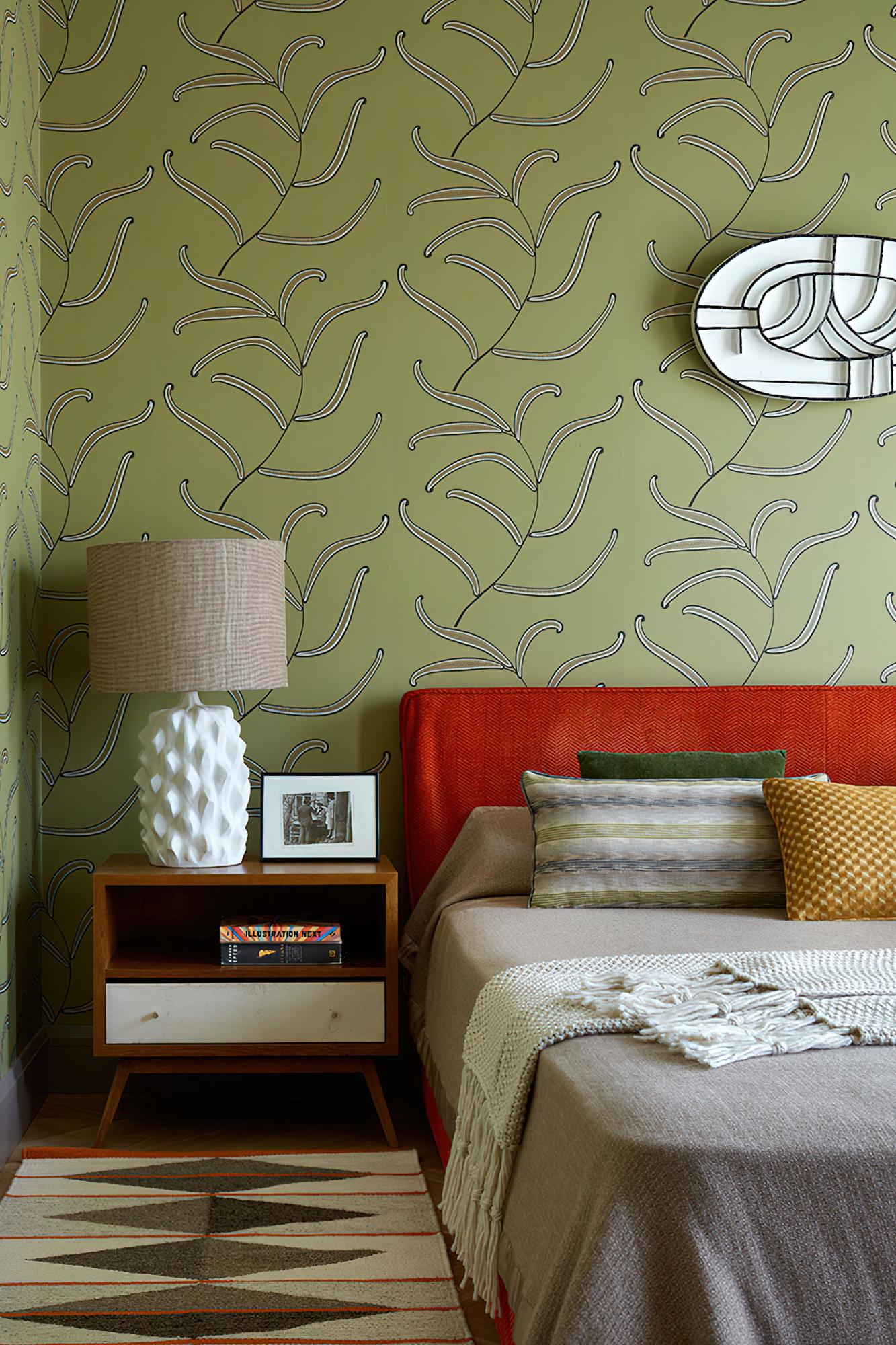
Source: pufikhomes.com
Gallery of Retro-Style Bedrooms:
6.3 Kitchen in Retro Style
Retro kitchens are characterized by tiles, either as a backsplash or flooring. For backsplash tiles, high-gloss options are acceptable. Appliances like ovens, microwaves, and refrigerators in retro style are not hidden behind cabinet doors but left to stand out. The design of retro kitchens is generally simple, functional, and full of color.
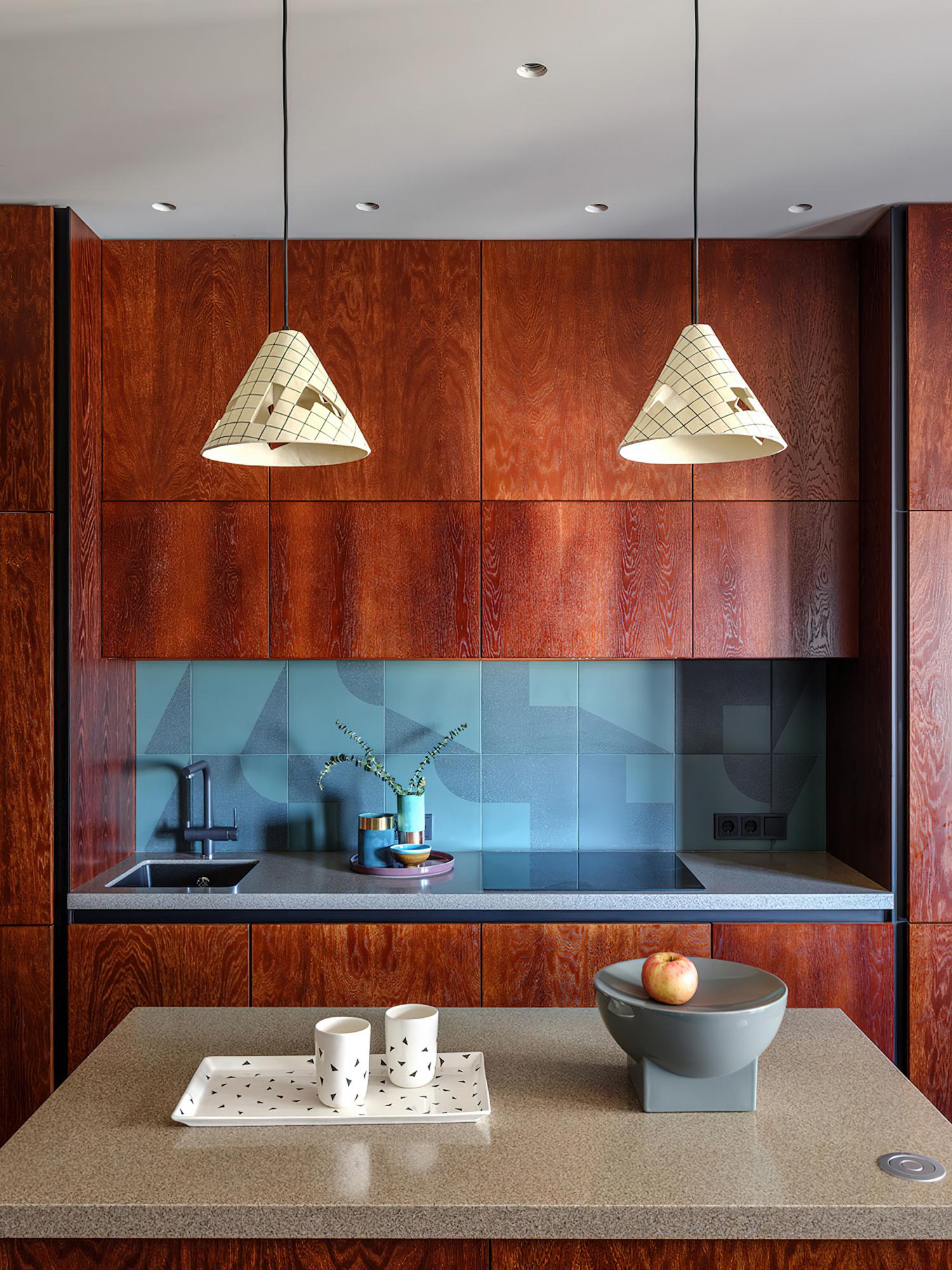
Source: pufikhomes.com
Gallery of Retro-Style Kitchens:
6.4 Dining Room in Retro Style
Dining chairs are chosen with pointed wooden legs, which emphasize the retro aesthetic. Dining tables are often oval or rectangular with rounded edges.
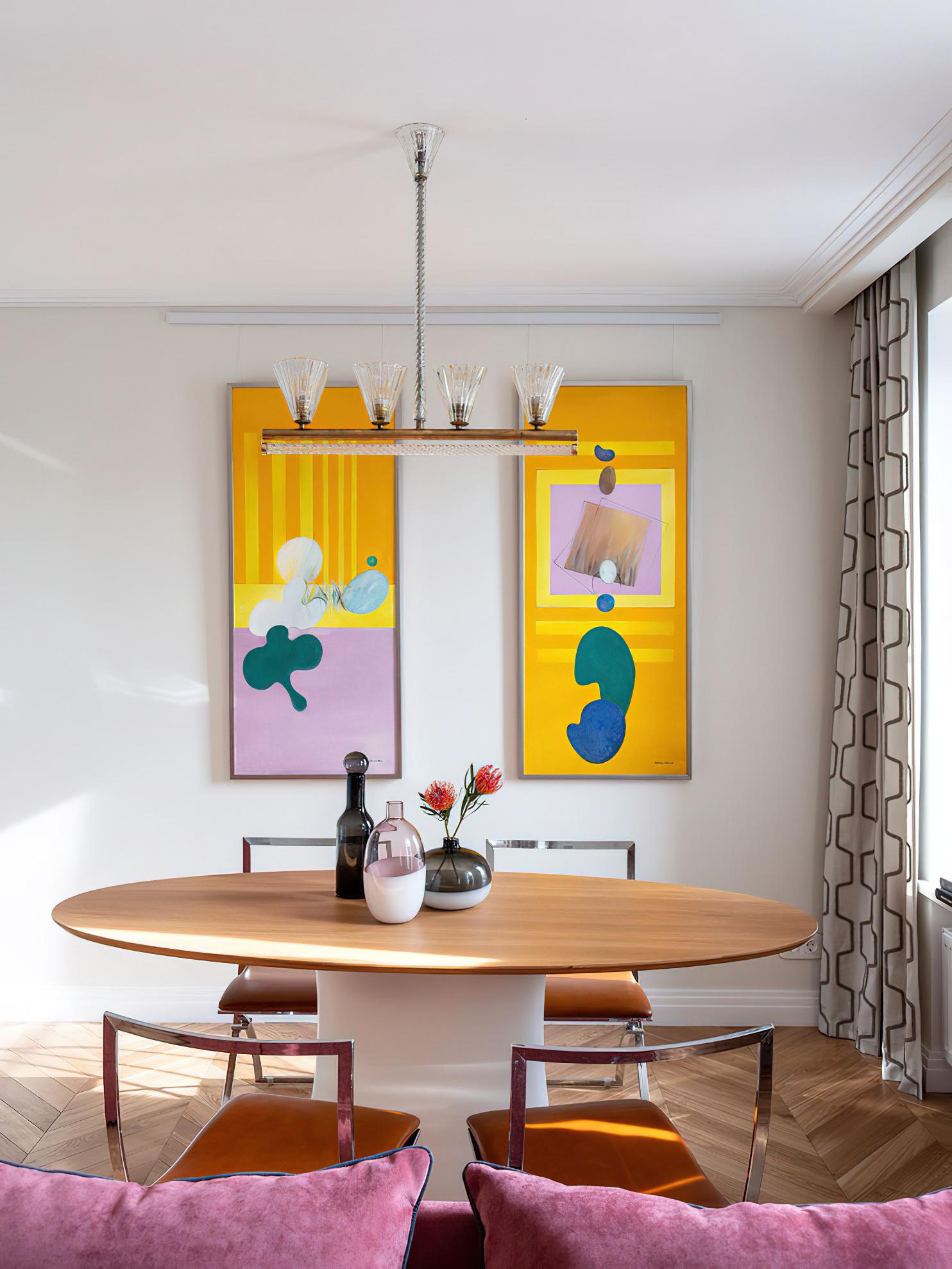
Source: pufikhomes.com
Gallery of Retro-Style Dining Rooms:
6.5 Bathroom in Retro Style
Retro bathrooms feature either solid-colored tiles in various hues or regular geometric patterns. Sinks are typically rounded. Even a glass shower enclosure can fit perfectly into a retro-style bathroom. Geometric patterns can also be applied to furniture, adding uniqueness to the interior while maintaining simplicity.
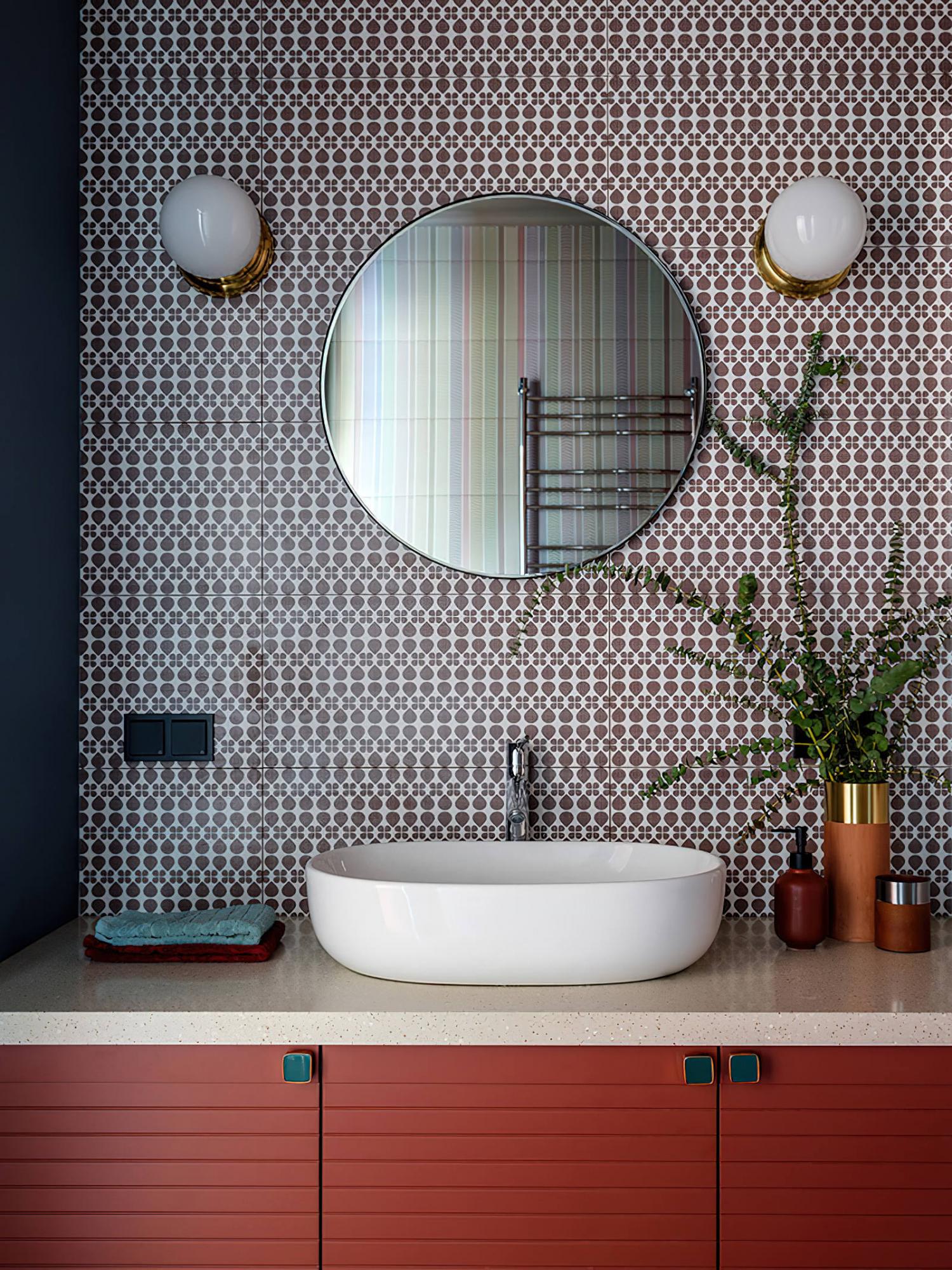
Source: pufikhomes.com
Gallery of Retro-Style Bathrooms:











































